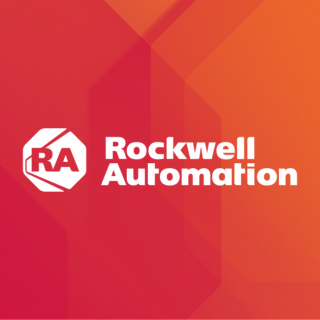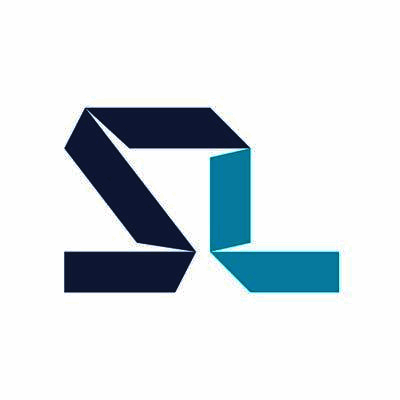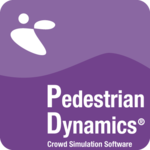Description
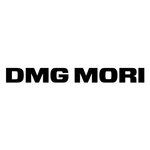
DMG MORI Virtual Machine
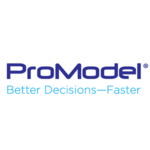
ProModel Optimization Suite
Comprehensive Overview: DMG MORI Virtual Machine vs ProModel Optimization Suite
DMG MORI Virtual Machine
a) Primary Functions and Target Markets
The DMG MORI Virtual Machine is a high-fidelity simulation tool used primarily in the manufacturing sector. It allows users to create digital twins of their CNC machines to simulate, optimize, and validate machining processes virtually before physical implementation. This helps in reducing downtime, preventing collisions, and enhancing overall production efficiency.
-
Primary Functions:
- Simulation and Validation: Create accurate digital representations of machines and conduct complete virtual test runs.
- Collision Prevention: Provides real-time alerts and preventive measures against potential collisions.
- Optimization: Enhances machining processes by optimizing toolpaths and operations in a virtual environment.
- Training and Visualization: Acts as a training platform for operators and provides detailed visualization for better planning and decision-making.
-
Target Markets:
- Industrial manufacturing sectors such as automotive, aerospace, and medical device manufacturing.
- Companies that use CNC machines for complex and precision engineering applications.
b) Market Share and User Base
DMG MORI is a renowned player in the machine tool industry, and its Virtual Machine software is prominently used by businesses that have already invested in DMG MORI hardware. Its market share is significant among existing DMG MORI users, offering them a cohesive ecosystem of hardware and software integration. However, compared to general simulation software providers, its user base is more niche, primarily consisting of users within the DMG MORI network.
ProModel Optimization Suite
a) Primary Functions and Target Markets
ProModel Optimization Suite is a versatile simulation-based, predictive analytics tool designed to optimize processes across various industries. It focuses on modeling, simulation, and optimization of various operational processes to help improve efficiency and productivity.
-
Primary Functions:
- Process Simulation: Models complex systems and processes to visualize and analyze potential improvements.
- Predictive Analytics: Uses simulation data to predict future outcomes and system behaviors.
- Optimization: Provides tools to identify and implement efficient resource allocations and use.
- Scenario Planning: Allows users to conduct ‘what-if’ analyses for better strategic planning.
-
Target Markets:
- Wide range of industries including logistics, healthcare, manufacturing, and service industries.
- Companies focusing on process improvement, capacity planning, and supply chain optimization.
b) Market Share and User Base
ProModel is a well-established name in simulation-based optimization, with a significant presence across diverse sectors. It has a broad market reach beyond manufacturing, covering logistics and service industries, which gives it a larger potential user base compared to more niche, product-specific tools like the DMG MORI Virtual Machine.
Key Differentiating Factors
-
Integration with Hardware:
- DMG MORI Virtual Machine integrates directly with DMG MORI machinery, offering seamless interoperability and enhanced process fidelity for machine users.
- ProModel is hardware-agnostic and versatile in application, suitable across a wide variety of systems and industries.
-
Industry Focus:
- DMG MORI targets precision manufacturing industries highly reliant on CNC machinery.
- ProModel offers broader applications, useful in any industry needing process optimization and predictive planning.
-
User Base and Accessibility:
- DMG MORI has a partially captive market due to its hardware sales, while ProModel caters to a wider audience seeking standalone simulation and optimization tools.
-
Feature Set:
- DMG MORI emphasizes detailed machine-level simulation, ideal for preventing collisions and fine-tuning CNC machine operations.
- ProModel provides comprehensive process optimization capabilities, focusing on broader system-level improvements rather than specific machine-centered simulations.
Both tools offer valuable solutions for improving operational efficiency, but they serve different functions and markets, each with its unique strengths and specializations.
Contact Info

Year founded :
Not Available
Not Available
Not Available
Not Available
Not Available

Year founded :
Not Available
Not Available
Not Available
Not Available
Not Available
Feature Similarity Breakdown: DMG MORI Virtual Machine, ProModel Optimization Suite
The DMG MORI Virtual Machine and ProModel Optimization Suite are both sophisticated tools used for simulation and optimization in manufacturing and production environments. However, their functionalities cater to slightly different areas within this domain.
a) Core Features in Common:
-
Simulation Capabilities:
- Both offer simulation environments where users can model the operations of a virtual system. This allows for testing and validation of processes prior to physical implementation.
-
Optimization Tools:
- Each provides tools for optimizing efficiency and performance. Users can adjust parameters to see the effects on production outcomes and identify bottlenecks or inefficiencies.
-
Real-Time Data Integration:
- Both platforms allow for the integration of real-time data into the simulation models, enabling dynamic adjustments and more accurate predictions.
-
Analytical and Reporting Features:
- They both include analytics for assessing performance and generating reports that help in decision-making and communicating results to stakeholders.
b) User Interface Comparison:
-
DMG MORI Virtual Machine:
- Typically integrates into the broader DMG MORI ecosystem, providing a user interface that reflects its roots in CNC machining and manufacturing. It focuses on precision modeling of machine operations and likely includes a 3D graphical interface for visualizing the machining processes in detail.
-
ProModel Optimization Suite:
- Often features a more generalized interface aimed at a wide range of manufacturing and business processes, not limited to machining. It might have a comprehensive dashboard with options for viewing different simulation scenarios and optimization outcomes. Its interface might be considered more adaptable for various business processes outside of strict machinery simulation.
c) Unique Features:
-
DMG MORI Virtual Machine:
- Precision Machining Simulation: Specifically designed to replicate CNC machine operations with high fidelity, which is essential for DMG MORI's customer base. It may include features like machine toolpath visualization, collision detection, and virtual commissioning tailored for machining environments.
- Direct Integration with Machines: As it is part of a larger machine tool manufacturer’s offerings, it typically ties directly into DMG MORI machines, which can facilitate seamless integration and operation between the virtual and physical machine environments.
-
ProModel Optimization Suite:
- Customizable Process Simulation: ProModel is more focused on general process optimization across various industries, not limited to machining. It allows modeling of manufacturing processes, logistics, and other business operations, making it more versatile across different sectors.
- Scenario Planning and Risk Assessment: Features that allow for detailed what-if analysis and risk assessment, which are crucial for decision-making in more complex, varied industrial settings or entire supply chains.
These distinctions reflect the specific applications and user bases of each tool, with DMG MORI's Virtual Machine tailored more towards manufacturing and machining, while ProModel offers broader industry applications.
Features

Not Available

Not Available
Best Fit Use Cases: DMG MORI Virtual Machine, ProModel Optimization Suite
DMG MORI Virtual Machine and ProModel Optimization Suite serve different needs within the manufacturing and operational optimization landscape. Understanding the best fit use cases for each can help businesses make informed decisions.
DMG MORI Virtual Machine
a) Best Fit Use Cases:
-
Manufacturing Companies: Particularly those involved in CNC machining. The DMG MORI Virtual Machine is ideal for businesses that require precise simulation of CNC machine operations.
-
Prototyping and Product Development: Companies that focus on rapid prototyping and product development benefit substantially by simulating machining processes for new components.
-
Aerospace and Automotive Industries: These sectors, which require high precision and reliability, are ideal matches due to the machine's ability to simulate complex machining processes.
-
Training and Education: Technical schools and training centers offering courses in CNC machining can effectively use the Virtual Machine to provide realistic training scenarios without the risk of damaging physical machines.
ProModel Optimization Suite
b) Preferred Scenarios:
-
Manufacturing and Production Planning: Companies that need advanced simulation and optimization of production lines or facilities benefit from ProModel's capabilities to identify bottlenecks and improve efficiency.
-
Healthcare Systems: Hospitals and clinics can use ProModel to optimize patient flow, resource allocation, and scheduling, by simulating various scenarios and their outcomes.
-
Supply Chain Management: Businesses involved in logistics and supply chain can use it to streamline operations, from warehouse management to transportation logistics, by simulating different supply chain scenarios.
-
Service Industry Processes: Banks, call centers, and other service-based companies can optimize staffing plans, service processes, and customer interactions using ProModel's simulation capabilities.
d) Catering to Different Industry Verticals and Company Sizes:
-
Industry Verticals:
- Manufacturing: Both products serve manufacturing businesses, but DMG MORI is more focused on the machining process, while ProModel covers a broader scope of manufacturing operations and logistics.
- Healthcare: ProModel is more relevant, offering tools to simulate healthcare processes and resource management.
- Automotive and Aerospace: These industries can benefit from both tools, using DMG MORI for product precision and ProModel for operational efficiency.
-
Company Sizes:
- Small to Medium Enterprises (SMEs): SMEs in manufacturing could leverage DMG MORI to avoid the costs of machine damage from procedural errors. For logistical and process optimization, SMEs might prefer ProModel for its cost-saving potential.
- Large Corporations: Larger operations can benefit from integrating both solutions. They can use DMG MORI for high-precision machining needs and ProModel to optimize complex, multi-layered operational processes across various departments.
Both DMG MORI Virtual Machine and ProModel Optimization Suite offer specialized tools tailored to enhancing precision, efficiency, and operational excellence across various sectors. They cater to different aspects of business processes, allowing users to choose based on specific operational needs and industry requirements.
Pricing

Pricing Not Available

Pricing Not Available
Metrics History
Metrics History
Comparing undefined across companies
Conclusion & Final Verdict: DMG MORI Virtual Machine vs ProModel Optimization Suite
Conclusion and Final Verdict:
After a comprehensive evaluation of DMG MORI Virtual Machine and ProModel Optimization Suite, the determination of which product offers the best overall value depends significantly on the specific needs and priorities of the user. Both products excel in their respective niches within the realm of manufacturing simulation and optimization but cater to slightly different user requirements.
a) Best Overall Value:
-
DMG MORI Virtual Machine is an exceptional tool for users heavily involved in machining, focusing on accuracy, precision, and virtual validation of CNC programs. It offers unsurpassed value to companies that are invested in DMG MORI’s ecosystem, providing seamless integration and support tailored specifically for DMG MORI machinery.
-
ProModel Optimization Suite, on the other hand, provides broader optimization capabilities across various manufacturing and service environments. It’s highly valuable for organizations looking for flexibility in optimizing diverse operations beyond just machining, such as logistics, healthcare, and general production processes.
b) Pros and Cons:
DMG MORI Virtual Machine:
-
Pros:
- High precision and accuracy in simulating DMG MORI machines.
- Reduces setup times and errors by detecting issues before production.
- Tight integration with DMG MORI hardware and software ensures optimal performance.
-
Cons:
- Limited to DMG MORI equipment, reducing flexibility with other brands.
- May have higher upfront costs, especially for smaller manufacturers not already using DMG MORI products.
ProModel Optimization Suite:
-
Pros:
- Versatile and adaptable to various industries beyond just machining.
- Robust optimization tools to improve throughput, reduce waste, and enhance efficiency.
- Scalable solutions for different sizes and types of operations.
-
Cons:
- Might require more customization and configuration to achieve machine-specific simulations.
- Could have a steeper learning curve for teams unfamiliar with general optimization frameworks.
c) Specific Recommendations for Users:
-
For DMG MORI Machine Users:
- If your operations rely heavily on DMG MORI equipment and you are looking to maximize efficiency and minimize downtime through detailed CNC program validation, the DMG MORI Virtual Machine is the recommended choice.
-
For Broad Operations Optimization:
- Companies seeking a wide-ranging optimization solution across various operational verticals might find greater value in the ProModel Optimization Suite due to its flexibility and comprehensive optimization capabilities.
-
Mixed Machinery Environment:
- In environments where machinery from multiple manufacturers is used, or where there’s a need for broader logistical or operational optimization, consider using ProModel. However, supplementing this with dedicated DMG MORI solutions when dealing with specific DMG MORI machines could provide a hybrid approach.
In conclusion, the decision between DMG MORI Virtual Machine and ProModel Optimization Suite should be guided by the specific requirements of your operation, the integration demand with existing systems, and the scope of your optimization needs. Balancing these factors will lead to the most effective choice that aligns with your company's strategic goals.
Add to compare
Add similar companies
